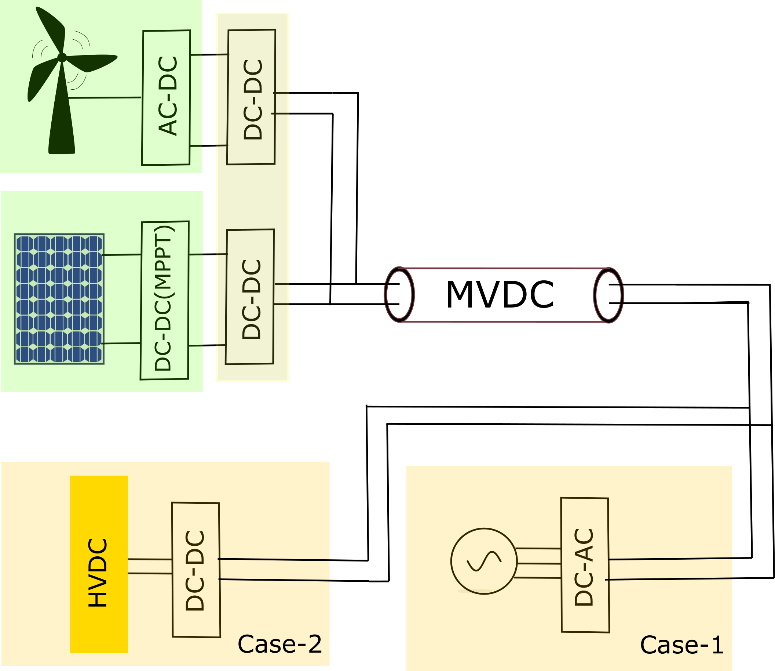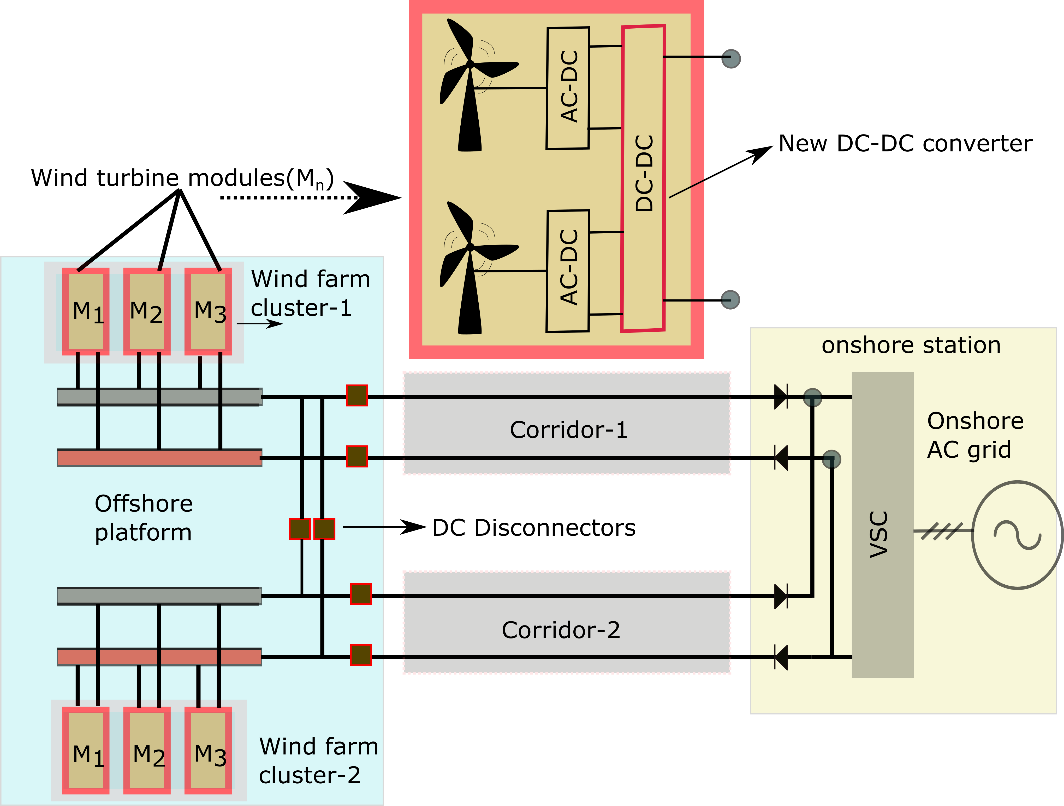Direct integration of RE sources with MVDC grid

Fig 1. MVDC Grid.
The conventional way to integrate renewable power is through AC transmission systems. However, there are several challenges while integrating inverter-based resources with a weak AC grid. Some challenges faced in RE integration in Rajasthan RE complex in India are discussed in [1]. A fault in the vicinity of the RE complex is resulting in low voltages across the RE park (due to low short circuit level) which results in the reduced generation from RE plants. However, after the fault clearance, a high voltage is observed in the system due to light loading in evacuating transmission lines. The poor response time of inverters in changing the reactive power injected aggravates the high voltage. This results in the tripping of inverters on overvoltage protection.

Fig 2. Direct Integration of renewable energy sources with MVDC network
One of the solutions to the above problem is to use DC transmission systems to evacuate active power from renewable resources. Solar PV panels with higher operating voltage of up to 3.5kV are expected shortly due to recent advancements in bifacial double-glass PV module technologies. Thus, the DC output from solar PV cells could be directly connected to the MVDC network after stepping up the voltage level. The DC output from the machine-side converter of the type-4 wind generator could be directly integrated into the MVDC system using a high-gain DC-DC converter, as shown in Fig. 3.
Challenges with DC integration of Renewable power
One of the major challenges in the DC grid is the lack of commercially viable DC circuit breakers. Hence, the DC evacuation grid formed should have the ability to bypass DC faults, and any fault in the MVDC transmission system should be isolated immediately. This can be achieved using DC fault-tolerant converters. The modular design of the converter is preferred because of better scalability, easier repair and maintenance. Depending on the application, an isolated or non-isolated converter may be required. Galvanic isolation requires the use of transformers. For offshore platforms, the weight of the equipment should be as minimal as possible. The size reduction of the collector system is beneficial for offshore applications where the weight and footprint of converter stations are critical factors.The concept of a DC collection platform is most suitable for offshore platforms, as the scheme involves a reduction in the number of converters used. Another requirement of the required DC-DC converter is high gain, as it must convert the DC output of the VSC connected to the wind generator or the DC output of PV cells into MVDC voltage.

Fig 3. An illustration of the offshore evacuation scheme of wind power through the MVDC network.
The major research aspects of MVDC integration are listed below.
| [1] |
Fault tolerant Modular converters for MVDC applications. |
| [2] |
DC circuit breakers for MVDC applications. |
| [3] |
Integration of MVDC network with HVDC systems. |
| [4] |
Direct integration of Solar/Wind farms with the MVDC network. |
| [5] |
Integration of EV charging infrastructure with DC grid. |